A lush, jungle paradise with an abundance of wildlife, adventure activities and nature experiences, Costa Rica is a unique and diverse destination. Whether you’re spotting sloths in the rugged rainforest, sipping coco-locos on the beach or sending your pulse rate up with a spot of ziplining, Costa Rica has something for everyone. To help you #TravelWell, here’s our ULTIMATE guide to visiting Costa Rica.
Planning your trip?
•••
Hotels, we use Agoda
Rentals: Discover Cars
Transfers: Welcome Pickups
Insurance: Cover-More
SIM Cards: Simify
I register as an affiliate for anything I use and recommend. Some of the links on this page are affiliate links, which means if you click these links and make a purchase I may earn a commission. This commission comes at no additional cost to you, and in some cases, these links may even unlock savings or give you bonuses I’ve negotiated. You can find out more about this here and here.
Where is Costa Rica?
Located in Central America with coastlines on the Carribean and Pacific, Costa Rica is bordered by Nicaragua and Panama. It has a population of around 5 million with the capital and largest city, San José, being home to 2 million. Accounting for nearly 6% of the world’s biodiversity, Costa Rica is one of the 20 countries with the highest biodiversity in the world and roughly a quarter of its area is protected jungle. A pioneer of ecotourism, Costa Rica covers an area of around 51,100 km2 or 19,700 sq mi.
How to get to Costa Rica
To get to Costa Rica we flew to Los Angeles and caught a connecting flight from LAX to SJO (San José, Costa Rica), arriving at Juan Santamaría International Airport. The flight time from LAX to SJO is around 5 1/2 hours.
Pro Tip: There are a number of airports that can easily be confused for San José, Costa Rica! When booking flights, be absolutely certain your booking is correct by looking for the ‘SJO’ airport code.

If you’re coming from Australia, like us, there are daily flights to Los Angeles and one great tip is to break your flights up like we did! We flew from Brisbane to Los Angeles, arriving at around 6 am and checking into Sheraton Gateway Los Angeles Hotel.
On arrival at the hotel, we paid a little extra to upgrade, giving us immediate room access and club lounge access too. It was money well spent as we maximised our time at the hotel and didn’t need to spend any money on food, thanks to the club lounge. The hotel also operates a free shuttle to/from the airport. For us, it was money well spent!

We spent the whole day catching up on sleep, resting and getting over any tiredness we may have had. That way, when we caught our flight the next day, we were fresh and ready to go! This is a great way to ensure you arrive at your destination having already overcome most of the jet lag. Though, of course, if you are flying from somewhere closer or just want to get to Costa Rica ASAP, you can arrange to catch your next flight right away or simply book connecting flights.
Pro Tip: If you’re catching a connecting flight in Los Angeles, you must collect your luggage at LAX, go through customs/border control then give your bags back to the airline/airport staff. There should be signs to follow and if you’re unsure, ask the on-ground staff for help.

Is it safe to visit Costa Rica?
Our trip to Costa Rica was our first time visiting Central America so we had no idea what it would be like and one question that kept coming up was, ‘Is it safe?’ When we checked the Smart Traveller website before departing for Costa Rica, there was a travel safety warning stating we should, ‘Exercise a high degree of caution,’ which was slightly unnerving.
The one place we felt we needed to be extremely cautious was San José. As the capital city, there are a lot of people trying to survive which can make tourists the perfect target for opportunistic crimes like pickpocketing.

On our first day in San José, our walking tour guide advised we shouldn’t wear any jewelry, just as a precaution and to make ourselves less of a target. We kept our day bags to the front of our bodies at all times and ensured they were securely zipped up.
I wrapped my camera tightly around my wrist using the strap and didn’t carry my passport or any other valuables with me. We watched each other’s backs closely and were diligent in crowded areas and had no issues whatsoever.

If you’re catching any kind of public transport or transiting through a public bus station, for example, you absolutely must keep your bags with you at all times and watch them very closely. These areas are where pickpockets and thieves thrive! Watch your luggage at all times and ensure it is put under the bus and securely locked away before taking your seat.
Use your hotel safe to store your passport, cash and any other valuables like laptops, watches, jewelry and so on. I would recommend catching Uber around, rather than walking long distances between destinations in San José, especially at night. I would also recommend you don’t get rip-roaring drunk and toddle off down a back alley late at night by yourself.
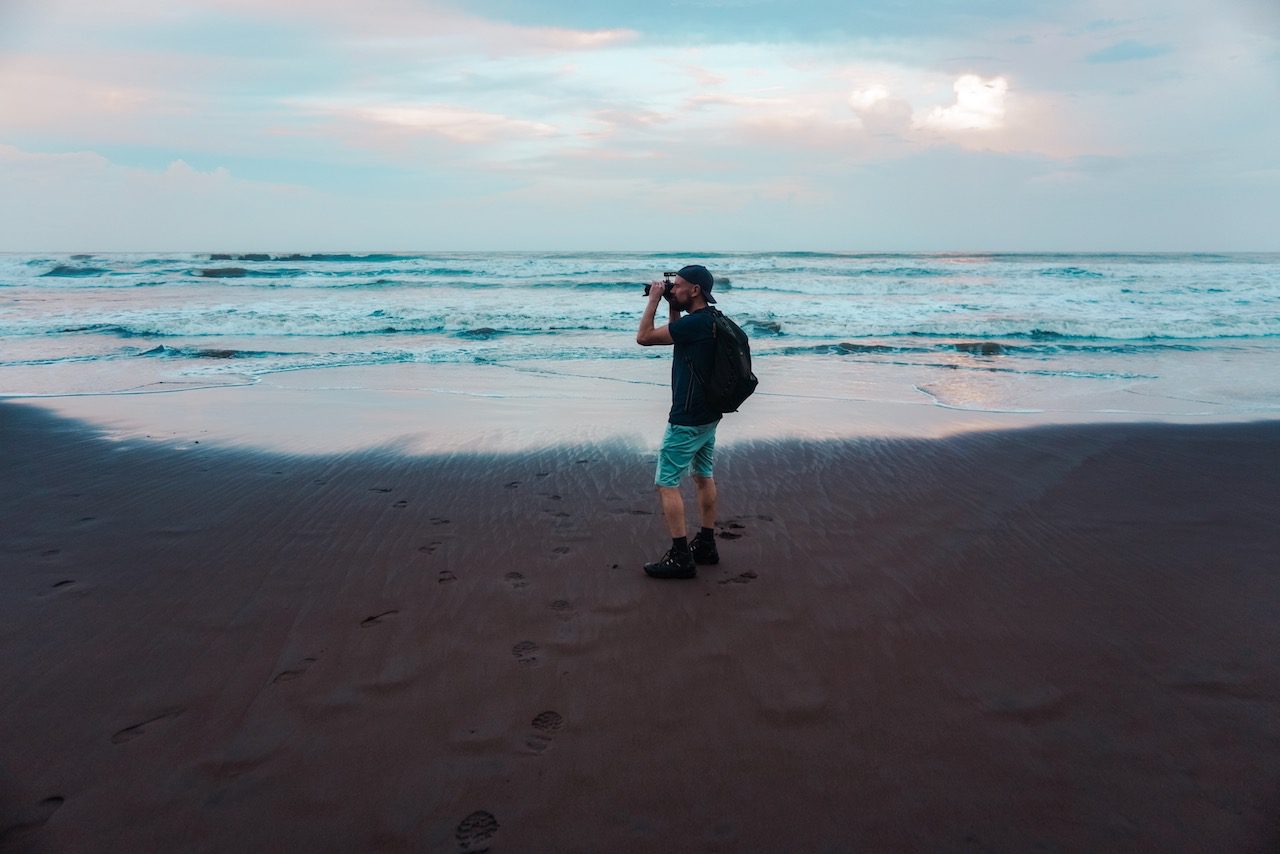
All of this may sound a bit scary but it doesn’t need to be! We had a great time in Costa Rica and didn’t have any problems with safety and I believe that’s because we were so diligent and took every precaution possible. Don’t give anyone the opportunity to steal anything from you and you should be fine! Once we were outside of San José, we were able to relax a lot more but still kept an eye on our belongings and followed the same basic safety practices and we had no issues.

11 Must-know tips for visiting Costa Rica
Here are a few essential, know-before-you-go tips for visiting Costa Rica:
- The official language of Costa Rica is Spanish and locals are all too happy to help you learn a little Spanish as you go.
- Be sure to learn a few key phrases in Spanish before you depart for your trip. Knowing how to say hello, goodbye and thank you goes a long way. While we didn’t run into any language issues, we did have Google Translate on our phones with the Spanish language downloaded and ready to go, just in case we needed to use it or wanted to learn a few words as we went. It was really helpful!
- The local currency is the Costa Rican colón (colones for plural) and we found US dollars were also widely accepted. When we went to pay for things, the staff would always ask if we’d like to pay in US dollars or colones.
- It’s a good idea to have a currency conversion app on your phone so you can quickly and easily understand the conversion rate if you aren’t experienced with it. We use XE Currency as it’s easy, free and works offline.
- Cards weren’t accepted everywhere we visited and ATMs were more difficult to find than they are in Australia. Be sure to have enough cash to cover activities and meals in-between ATM visits and don’t rely solely on your cards.

- Costa Rica has a tipping culture, especially for tour operators and hospitality workers so make sure you have some spare colones or US dollars on you to tip at bars and restaurants. If you aren’t familiar with tipping, downloading a free app like Tip Calculator may be useful.
- As Australians, we were not required to get a visa to enter Costa Rica at the time of our visit in November 2019.
- We were, however, required to get an Electronic System for Travel Authorisation (ESTA) to transit through the United States while going through LAX. Be sure to look into all visa requirements for Costa Rica and the USA prior to your departure. Australians can find up-to-date visa information on the Smart Traveller website here.
- Australians should also be sure to check the Smart Traveller website here for up-to-date travel advice, including visa and safety information.
- Make sure you’re prepared for tropical rain! This means packing a reusable poncho or rain jacket, waterproof shoes or hiking boots and sufficient waterproof gear that you can protect your cameras and valuables from a sudden deluge if needed.
- When it comes to packing I recommend skipping the fancy outfits and going for activewear and outdoor/adventure gear instead. Keep reading for more packing tips, below!
Read: 23 Things you need to know before you travel to Costa Rica.
Pro tip: Transiting through Los Angeles, LAX Airport to get to Costa Rica? You’ll still need an ESTA to pass through the United States!

The best time to visit Costa Rica
We visited in November and found the weather to be hot and humid, experiencing a mix of sunny and very rainy days. Typically, Costa Rica has a tropical climate all year round with only two seasons: summer and winter! The summer or dry season is December to April and the winter or rainy season is May to November. Our visit coincided with the rainy season but it didn’t dampen our spirits so if the only time of year you can visit is during the rainy season, don’t worry, you’ll still have a great time.

We experienced daily downpours followed by high humidity and would highly recommend, when the weather is good, you get out and do as much as you can while you can! Just make sure you pack plenty of wet weather gear as you should always be prepared for rain (P.S an umbrella won’t cut it!)
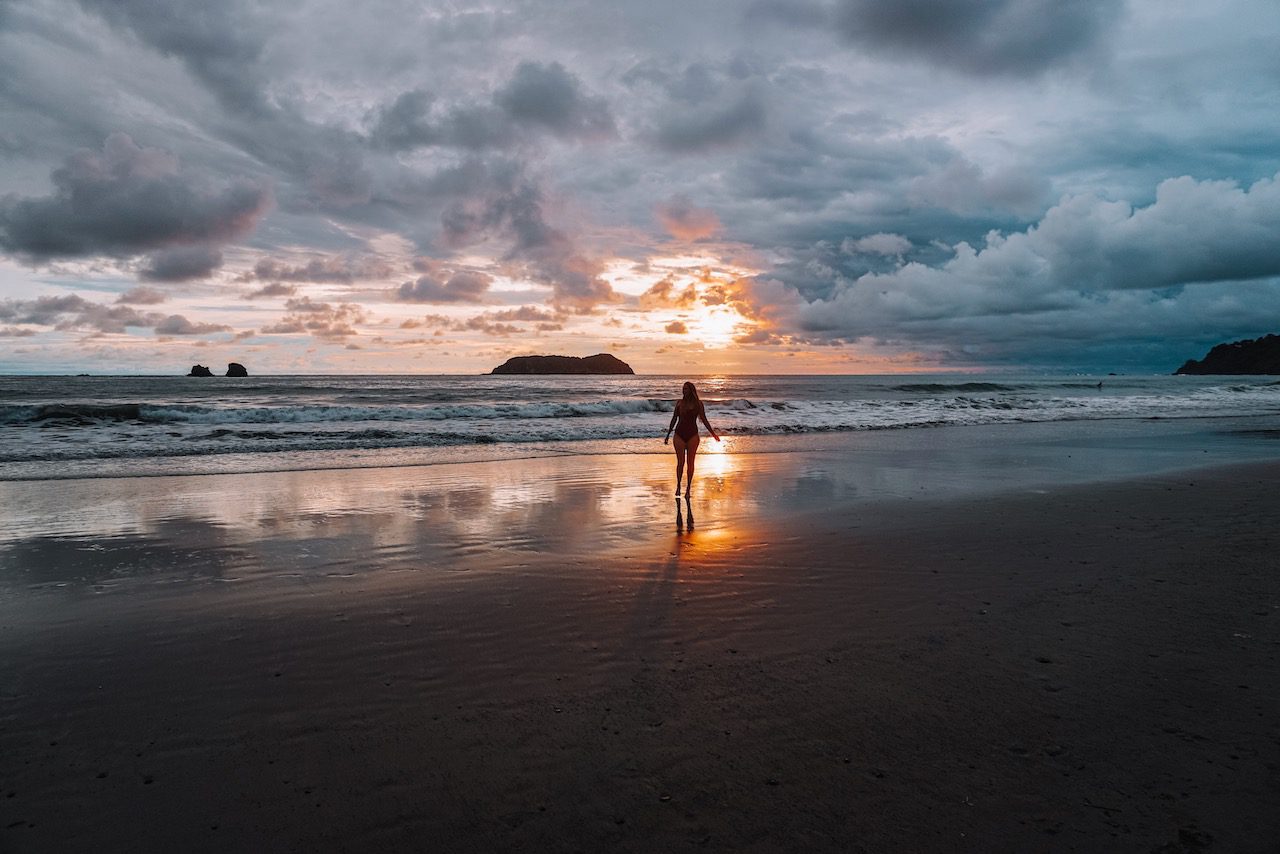
How to get around in Costa Rica
In San José and some spots with a larger population, like La Fortuna, Uber was available and offered an affordable, reliable way to get around. But it wasn’t available in all the spots we visited, which wasn’t a problem for us as our Intrepid Travel tour leader sorted out alternative transport for us.
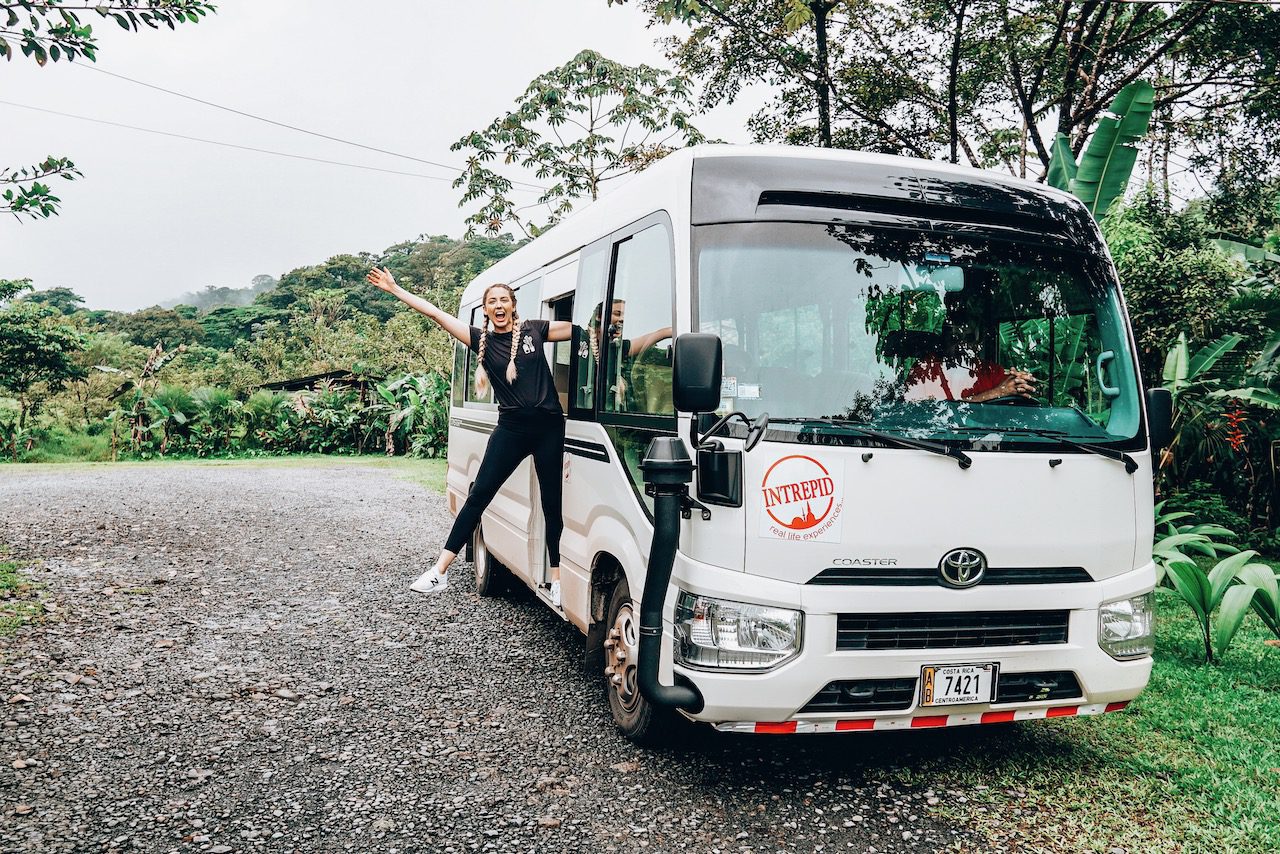
If you are using Uber, just make sure you download the app and set up your account before you depart home. Also, make sure you set your payment type to be via the app, not cash, to avoid getting ripped off. Just to note: when we caught Uber, the drivers would always ask Matt to sit in the front with them so don’t be weirded out if this happens to you too!
Pro Tip: There are no street addresses in Costa Rica! Use a free, offline app like maps.me to favourite the places you want to visit so you can navigate to them easily or show your drive if needed.
Is Costa Rica a budget-friendly destination?
I had imagined Costa Rica would be quite a cheap, budget-friendly destination but discovered it was more expensive than I thought. There are loads of adventure activities to do and we found food/drink prices to be on-par with Australian prices. I would just say, budget more than you think you need!

How much wildlife do you actually see in Costa Rica?
Spotting wildlife was high up on our list of Costa Rica must-do’s but we were a bit unsure how much wildlife we’d actually see. Turns out, spotting wildlife is actually pretty easy and we saw far more animals than we ever thought we would. The spots we found offered the most rewarding animal spotting experiences were Manuel Antonio, Tortuguero, and Monteverde.

We were lucky enough to see coati, white-faced capuchin monkeys, howler monkeys, scarlet macaws, hummingbirds and a variety of toucans. We also saw three and two-toed sloths, iguanas, Jesus Christ lizards, caimans, bats, tapir, snakes, dolphins, turtles, otters, and frogs, just to name a few!
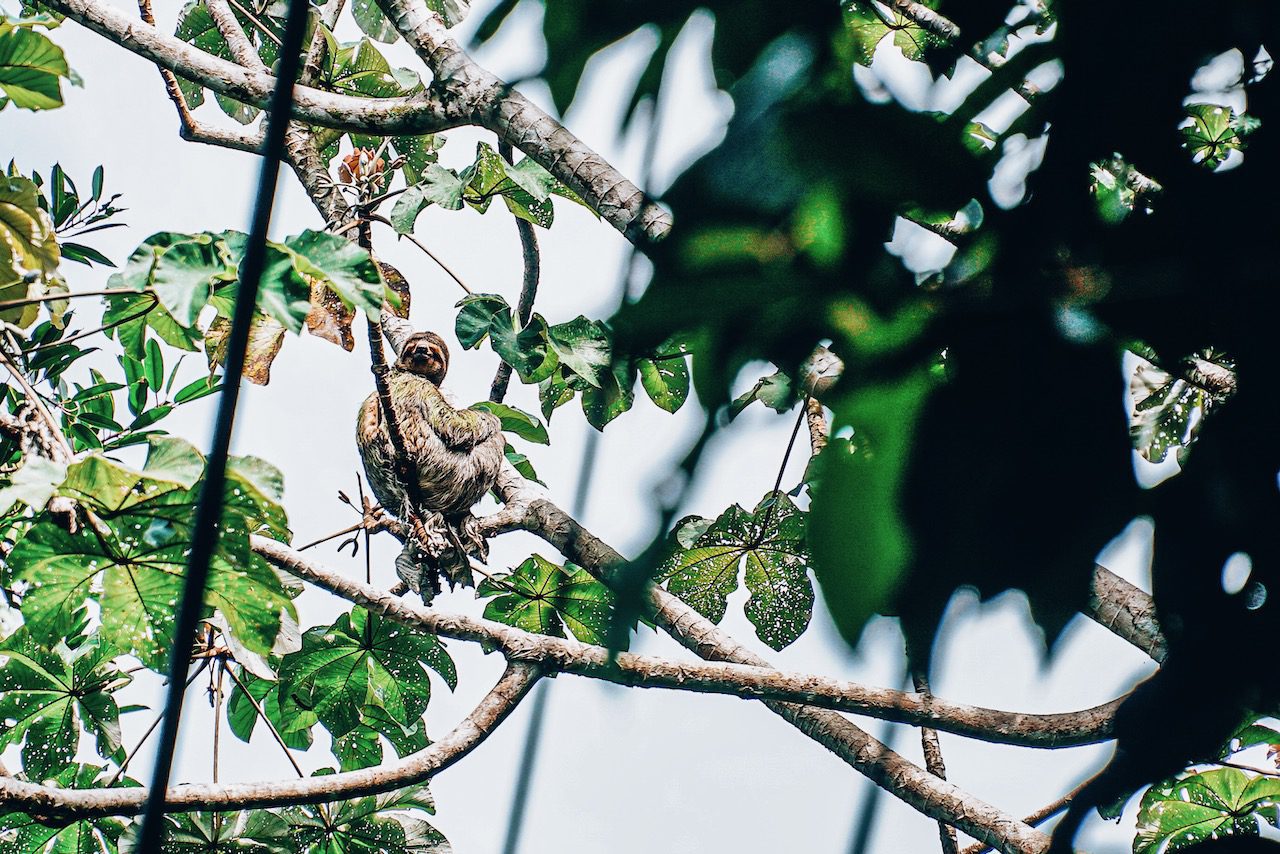
9 Foods you MUST try in Costa Rica
The food in Costa Rica has a wide range of influences including Spanish and Carribean! Here are a few of the dishes you should definitely try:
- Gallo Pinto: A Costa Rican staple typically served as part of a traditional breakfast, consisting of rice, beans, cilantro, assorted spices and, usually, cilantro
- Tamales: A corn dough mixture filled with meat or beans, steamed in a corn husk or banana leaf
- Empanadas: Stuffed bread or pastry baked or fried and stuffed with meat, beans and/or cheese

- Patacones: Twice-fried plantain slices used almost like a tortilla chip, served with guacamole, salsa, refried beans and, possibly, meat or vegetables of your choice
- Ceviche: Raw fish cured in citrus juice like lemon or lime and seasoned with spices, onions, salt and pepper
- Tropical fruit: Noni, Jocote, Rambutan, Malay Apples, Granadilla, Star Fruit, Sour Sop, Pejibaye, Cas and so much more! Try as much as you can!

- Casado: A mixed plate consisting of rice, beans, plantains, salad, tortilla and a choice of meat or vegetables
- Tres Leches: A sponge cake soaked in three different kinds of milk; evaporated, condensed and heavy cream.
- Coffee: Make sure you try plenty of Costa Rican coffee! It’s every bit as good as you’ve heard.
Pro Tip: We tried street food and didn’t have any problems with an upset stomach. That said, it isn’t uncommon for travellers to endure, ‘Montezuma’s Revenge!’ So, be sure to pack Imodium or similar just in case.


7 of the best places to visit in Costa Rica
Deciding which places to visit in Costa Rica can be overwhelming! Here’s a look at seven places we visited and what each one offers:
- San José: The bustling, capital city with plenty of history and great food. We did an Urban Adventure walking tour which took us to a few must-visit spots and gave us deeper local insight. Find San José accommodation here.
- Tortuguero: A village on the Carribean coast offering great wildlife spotting opportunities and delicious Carribean-influenced food. Find Tortuguero accommodation here.
- Santa Rosa de Pocosol: A rural spot home to amazing homestay families and a chance to soak in the culture and learn how the locals live. This experience was really made possible via Intrepid Travel and the relationships they have built with locals.

- Rio Celeste: A lush, jungle landscape noted for its vibrant turquoise water, waterfalls and hiking. Find Rio Celeste accommodation here.
- La Fortuna: A wonderland of activities including the hanging bridges, hot springs, waterfall and jaw-dropping volcano. Find La Fortuna accommodation here.
- Monteverde: Also a hub for activities like ziplining and horse trekking and home to the epic cloud forest. Find Monteverde accommodation here.
- Manuel Antonio/Quepos: The perfect beachside spot and one of the very best spots to see wildlife! Find Manuel Antonio accommodation here.
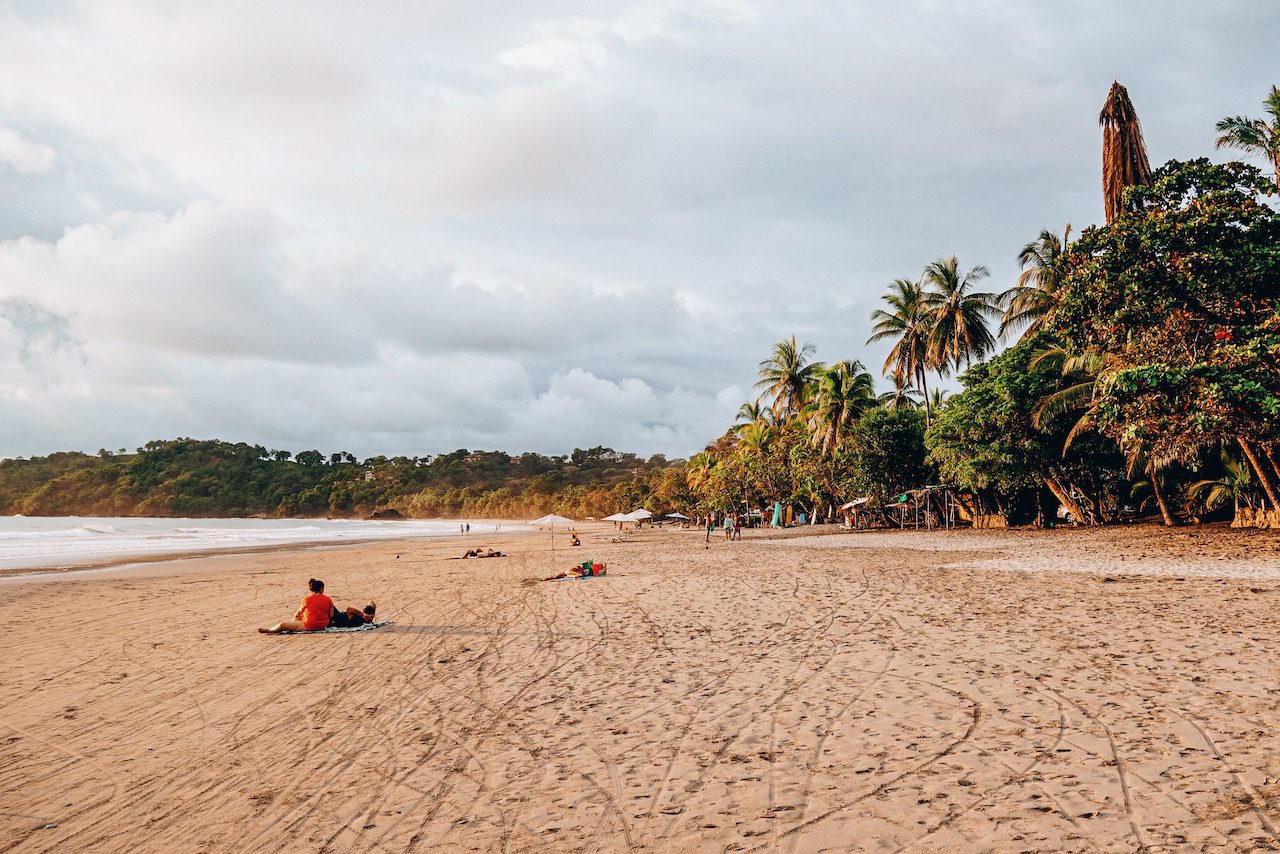
Is a group tour the best way to see Costa Rica?
For our first visit to Costa Rica, we decided to do a 15-day ‘Classic Costa Rica’ tour with Intrepid Travel. We felt the tour took us to a great range of spots, spending around two nights at each, which was the perfect length of time and wasn’t too rushed.
What we loved most about our group tour was having our tour leader, Edgar with us! His knowledge was incredible and we felt like we learned, saw and did so much more than we would have otherwise. Not only that but doing a tour means all your transport and accommodation are taken care of for you and when it came time for activities, some were included in the tour cost and others were organised through Edgar.
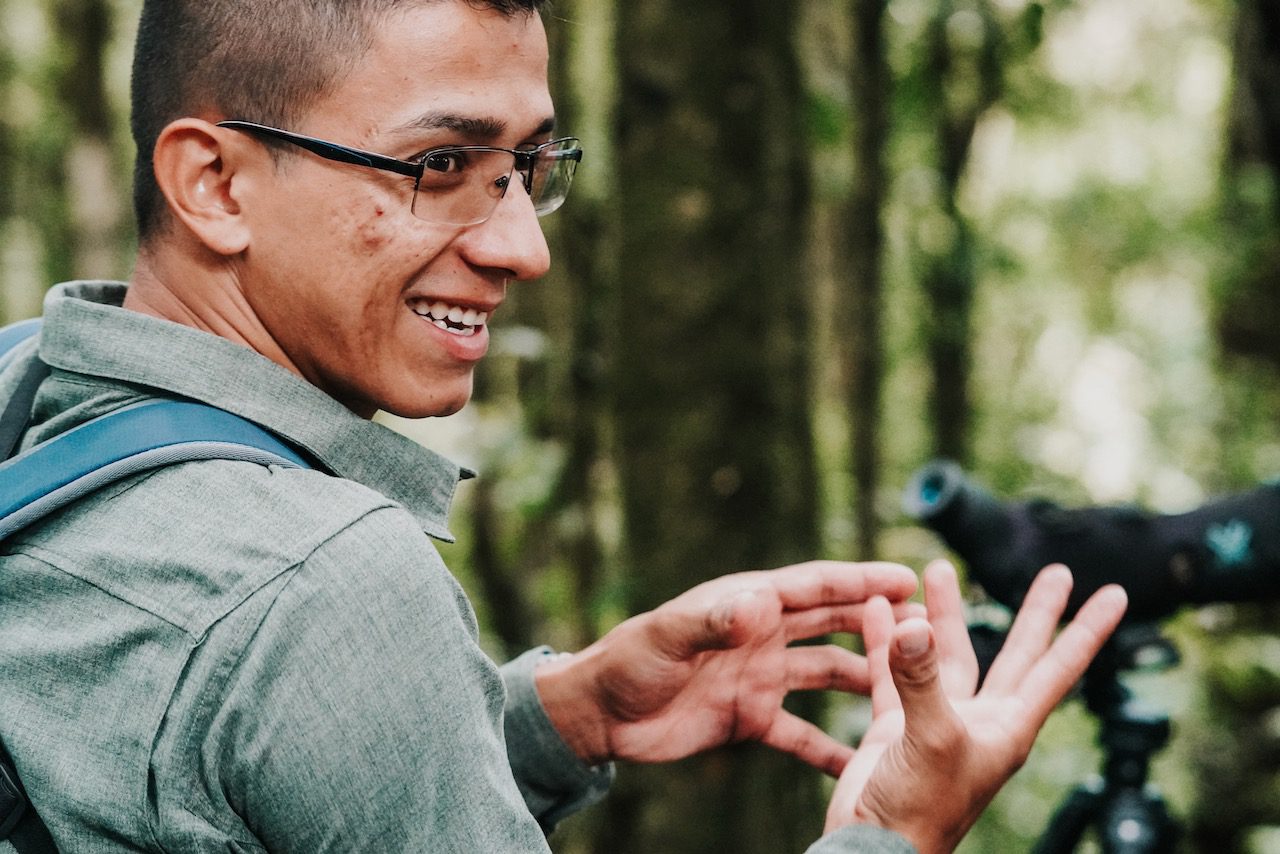
Our tour started and ended in San José, taking us to all the spots I listed above. We tried great food, had amazing cultural experiences, laughed a lot and made friends with our tour mates. Our tour size was capped at around 12 so it was a nice, small group and we felt we got to know and connect with everyone. We had a diverse group of people from all over the world with ages ranging from their early 20s to early 70s.

Travelling as a couple, Matt and I shared a twin room each night as did everyone travelling together. Solo travellers shared a room with one other person they felt comfortable with and on our trip, that saw three solo female travellers taking turns sharing a twin-share room and enjoying a room all to themselves.

We found the Intrepid Travel staff to be fantastic pre and post-departure, helping us with any questions we had and being really good with getting back to us in a timely way. We were able to organise our Urban Adventure easily and anything else we had questions about during the tour, Edgar handled expertly! Visit the Intrepid Travel website’s homepage here and search for the ‘Classic Costa Rica’ tour.

What to pack for a trip to Costa Rica
Visiting Costa Rica for the first time? Here’s a look at what you need to pack for your trip:
- High-quality bug spray with DEET
- A good quality, reusable poncho or raincoat that will cover your head, entire body and shield your day bag if needed
- A waterproof bag or backpack to protect cameras during a sudden downpour
- Good quality, water-resistant hiking boots
- Activewear or outdoor/adventure appropriate clothing
- Swimmers, boardshorts, and clothes you can layer on top of those, if needed, for activities like kayaking and tubing
- Hat and sunscreen and any other sun-smart gear
- Binoculars and/or a zoom lens for getting a close-up look at wildlife

- Crocs or water-appropriate shoes for visiting waterfalls and activities like tubing
- Quick-dry clothing so you aren’t soggy all day when it rains
- Water purifying bottle or refillable bottle so you can refill at the hotel lobby
- Laundry bag so you can easily keep your laundry together at hotels
- GoPro or action camera to capture those once-in-a-lifetime moments
- Sneakers and a pair of easy-to-slip-on shoes like sandals or flip-flops
- Using either a suitcase or backpack is fine
- Be sure you have travel insurance that covers you for all the adventure activities you plan on doing.
Pro Tip: Aim to pack clothing that can dry quickly, be comfortable and appropriate for jungle treks yet is still breathable during bouts of intense heat and humidity.

Get connected with a local SIM card from Simify.
Get it delivered before you leave home, ensuring you’re able to connect and navigate as soon as you arrive + find great things to do on the go!
Best travel resources for your trip!
If you found this post useful, please use the affiliate links below. I’ll make a small commission at no extra cost to you. Rest assured, these are the products and services I love and use. Read the disclaimer for more information. Thanks for your support! – Matt.
Agoda – hotels
Booking.com – hotels
Cover-More – insurance
DiDi – rideshare
Motorhome Republic – RVs
Discover Cars – rentals
Simify – SIM cards
Skyscanner – flights
Surfshark – VPN
TourRadar – tours
Welcome Pickups – transfers








